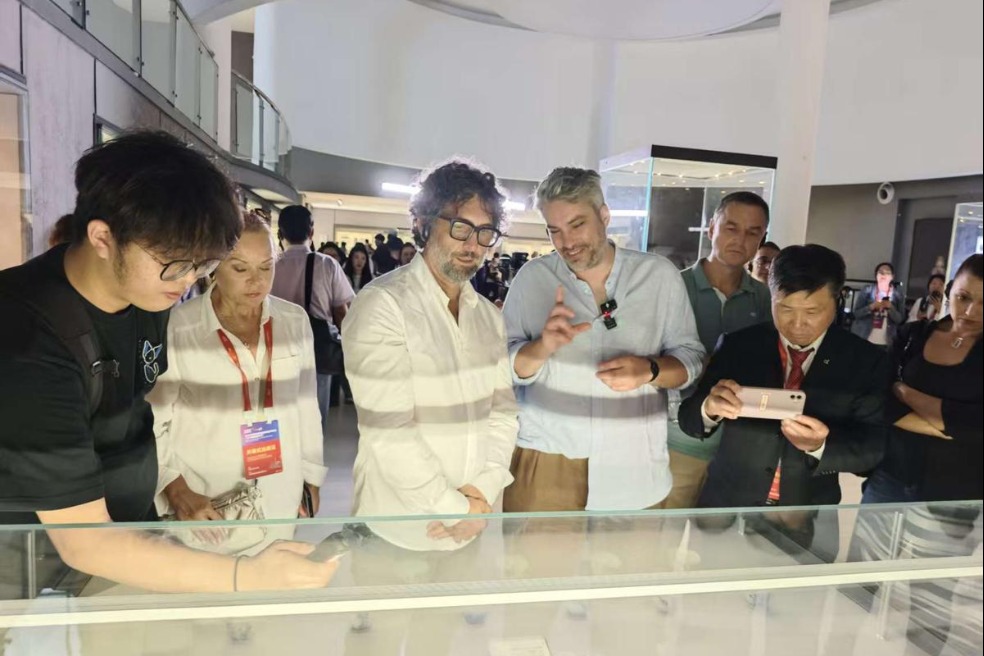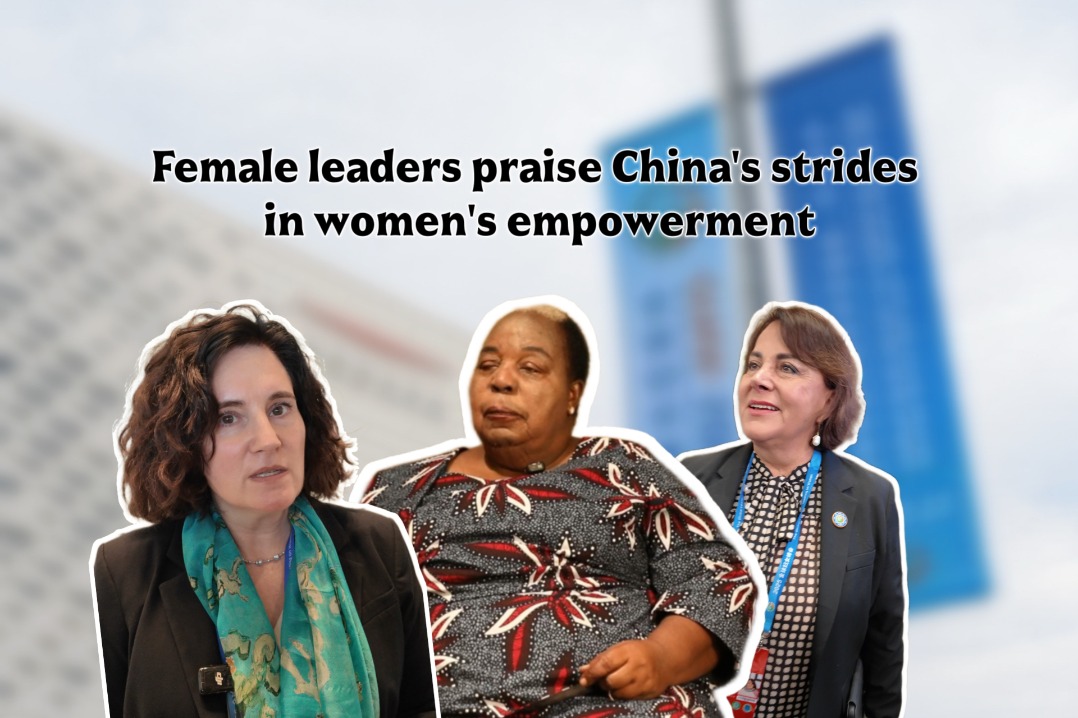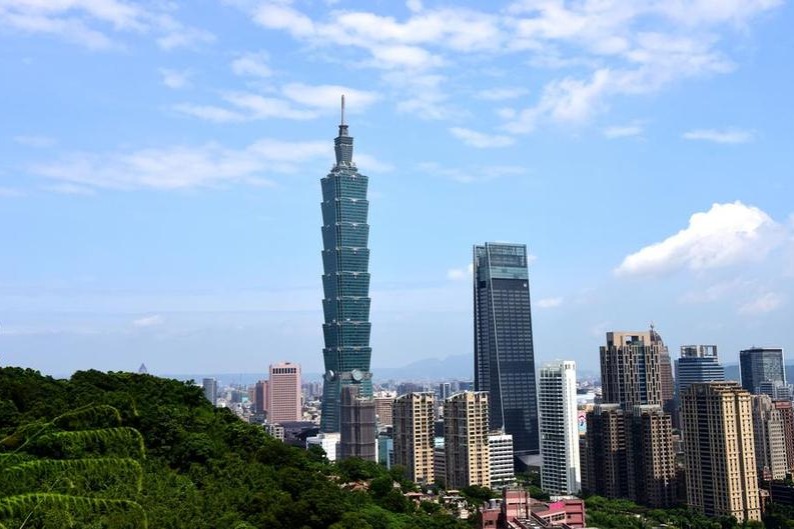Descendants of Nanyang Volunteers strive to preserve legacy of wartime bravery


Although more than 80 years have passed, Zhang Hua, a descendant of Nanyang Volunteers, remains deeply committed to preserving and sharing the legacy of the overseas Chinese wartime heroes.
"In 1939, my grandfather Zhang Jinbing returned to China (from Malaysia) as the ninth batch of Nanyang Volunteers to participate in the war against Japanese aggression," said Zhang Hua, 53, who is now a doctor in South China's Guangxi Zhuang autonomous region.
Nanyang Volunteers were overseas Chinese drivers and mechanics who returned from Southeast Asia to China during the Chinese People's War of Resistance Against Japanese Aggression (1931-45).
After the full outbreak of the war in 1937, China's coastal ports were soon cut off by Japanese invaders.
This made land transportation networks, mainly the line linking Southwest China's Yunnan province with Myanmar and the other one connecting South China's Guangxi with Vietnam, critical lifelines.
However, there was a severe shortage of domestic drivers and technicians.
Following an appeal by Tan Kah Kee, a patriotic overseas Chinese businessman and philanthropist, more than 3,200 Nanyang Volunteers from Southeast Asia arrived in China between February and September 1939.
Before the Yunnan-Myanmar Road was cut off in 1942, the Nanyang Volunteers transported over 500,000 metric tons of military supplies, more than 15,000 vehicles, and countless civilian goods through the route, according to Xinhua News Agency.
Zhang Hua said her grandfather, who was an accountant, passed the test to get the driver's license in a month and signed up immediately to return to China to work on the Yunnan-Myanmar Road.
"My grandfather used to show us the photos of overturned trucks and told us how extremely cautious one had to be while driving on the mountainous road," said Zhang.
Though less known than the Yunnan-Myanmar Road, the route between Guangxi and Vietnam transported more than 10,000 tons of goods per month, the highest monthly transport volume among China's key international supply routes at that time.
Lu Xiaoguang, 68, nephew of Nanyang Volunteer Lu Hanchu, said her uncle returned to China to transport goods on the Guangxi-Vietnam route when he was only 19.
"He had a stable job in Malaysia, but at a critical moment when China was in peril and his homeland called, he gave up all that comfort and returned to serve," Lu said.
In August, Lu Xiaoguang went to Malaysia to meet her relatives there for the first time. "Over all these years, neither war nor distance could cut the blood bond that connects us," she said.
Some of the Nanyang Volunteers also took part in the famous Battle of the Kunlun Pass in Guangxi.
Deng Zusheng, 38, said his grandfather, Deng Linying, sold all his assets in Thailand and returned to China in 1938.
"On Dec 16, 1939, he received an urgent order to participate in the Battle of Kunlun Pass, where he was tasked with transporting weapons and ammunition. That also made him a key target of attacks," said Deng Zusheng, recalling how his grandfather narrowly escaped from a deadly attack that killed the other two people in the car.
Laying down lives
More than 1,000 Nanyang Volunteers sacrificed their lives during the war. In October 2022, the last surviving Nanyang Volunteer Jiang Yinsheng passed away in Chongqing.
But their contributions to the victory in the Chinese People's War of Resistance Against Japanese Aggression and the World Anti-Fascist War are being remembered across generations.
In Guangxi, the Nanning Association of Families of Nanyang Volunteers has partnered with the Yinxiang Automobile School to establish a memorial exhibition room dedicated to these volunteers.
"Each student enrolled in the automotive maintenance program will need to visit this exhibition and learn about the history," said Liang Heng, the association's president.
The history of the Nanyang Volunteers is one of the most special and touching stories that exemplifies the overseas Chinese's support for their motherland during wartime, said Goh Tian Chuan, president of The Federation of Chinese Associations Malaysia (Huazong).
"The overseas Chinese provided critical backing to China, leaving behind numerous moving and heroic stories as well as historic sites," said Goh.
Besides participating directly in the resistance, overseas Chinese, especially those from Southeast Asia, also played a key role in financing wartime expenses, said Chin Chong Foh, an associate professor and chairman of the Yu Cai Foundation Centre for Chinese Studies at Universiti Tunku Abdul Rahman in Malaysia.
"In 1940 alone, China's total war cost amounted to 1.8 billion yuan ($251.6 million), of which overseas Chinese remittances accounted for 1.1 billion yuan," said Chin, who is also an academic director of the Centre for Malaysian Chinese Studies.
Around 70 percent of these remittances came from Chinese in Southeast Asia, said Chin.
Loo Kun Ying, lead researcher of the Nanyang Volunteer Drivers' and Mechanics' Archive Center of Malaysia, is hoping to finish the last book of a trilogy on Nanyang Volunteers by early next year.
Loo and her husband, Low Toh Nam, began the research on Nanyang Volunteers in 2007. Before Low passed away in 2019, they jointly interviewed seven such volunteers and over 90 descendants.
"Though aimed at defending China against Japanese aggression, the participation of the Nanyang Volunteers on the battlefield in China effectively constrained Japan's southward expansion into Southeast Asia," said Loo.
The experience of World War II demonstrated that when China was under invasion, countries in Southeast Asia could not escape its impact and nations must strengthen their mutual support and cooperation, said Hue Guan Thye, a senior research fellow of the Department of Chinese Studies at the National University of Singapore.
Contact the writers at kelly@chinadailyapac.com
- China, EU expected to play key role at COP30
- Farmers return to their roots to reap abundant profits
- New international body for mediation formed in Hong Kong
- Bogota to present Shanghai Award, a first for South America
- Chinese researchers make breakthrough in scanning the universe
- Aerial photos reveal Guizhou's dramatic karst landscape




































